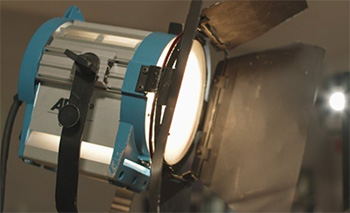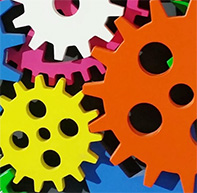Tip #918: Types of Lighting for a Film Set
… for Random Weirdness
Tip #918: Types of Lighting for a Film Set
Larry Jordan – LarryJordan.com
Nothing says every scene in your film needs to be lit by the same lights.


Anthony Najera, writing for Shutterstock.com, created a breakdown of the different types of lights you might see on a film set. This is an excerpt.
“What’s the H.M.I. Roger Deakins is always talking about? Do people still use tungsten lights? Should I use LEDs in this scene or fluorescent? There are a ton of different types of lighting on a film set, each with their own qualities, pros, and cons. Let’s take a look.”
- Fire. Lighting a scene with fire creates a beautiful aesthetic, as well as an element of caution.
- Tungsten lights. If we’re going by age, next up is the tungsten category. Tungsten lights have been used to make movies for as long as movies have been made. Tungsten lights are easily recognizable as “movie making lights.”
- HMI (Hydrargyrum Medium-Arc Iodide). Hmm… I didn’t know HMI stood for “hydrargyrum”… HMIs are much larger in size in comparison to their tungsten-equivalent wattage light. The HMI dwarfs the tungsten in size.
- Fluorescent. With advancements in tech comes improvement in efficiency. Fluorescent lights are super efficient, especially when compared to a tungsten light. A 60W fluorescent could match the output of a 650W tungsten. With this low power consumption comes less heat.
- LED (Light Emitting Diode). LEDs take the power consumption and heat improvements of fluorescent to the next level. LEDs are highly efficient and run basically cool to the touch. You don’t have to worry about these lights heating up a room because you ran them for hours.
EXTRA CREDIT
The article, linked above, has lots more details, images, pros and cons of different instruments and links to learn more.


Leave a Reply
Want to join the discussion?Feel free to contribute!